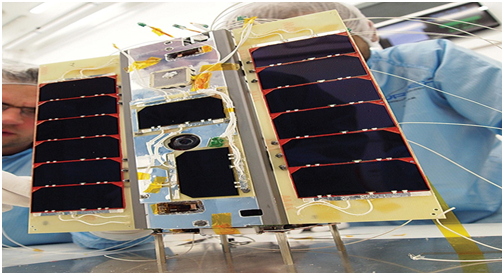Space exploration @just Rs.2000/- per day
“I am currently orbiting the Earth,
Recording the fluctuations in atmosphere
Taking awesome pictures from space
And performing experiments in zero gravity!”
This aren’t the words of an astronaut, living in international space station!.
Nor the decoded report of a satellite owned by NASA
This could actually be you someday………
How is this possible?
The answer is ARDUSAT
“Our mission is to provide affordable space exploration for everyone!”
“We love Arduino and we love space exploration. So we decided to combine them and let people run their own space experiments!”—Nanosatisfi
Space exploration is no longer reserved for the NASA and the billion dollar companies.
In August, two small satellites were sent to the International Space Station (ISS) and will be launched into their own orbits in November. But the inimitability here is that, these two satellites are not controlled by trained scientists or by NASA!
ArduSat will be the first open platform allowing the general public to design and run their own space-based applications. That to at a low cost of $35 per day
Ardusat gives us a chance to control a satellite for different purposes such as exploration, entertainment and experiments.
This isn’t some kind of new found technology,
What it simple did is, take advantage of the existing technologies and platforms so that more and more people can participate in the space technology. With more and more people participating, the space industry is likely to go on through countless novelty.
“Today we have over 50 satellites under contract. We’re now designing our own cubesat dispenser to maximize how many satellites we can put out during a hatch opening,” says Jeffrey Manber, NanoRacks’ founder and managing director.
How it works
“ ArduSat is a miniature cubic satellite, measuring 10 cm along each edge and weighing about 1 kg. Onboard it will have a suite of 25+ sensors, including three cameras, a Geiger counter, spectrometer, magnetometer and more. The sensors are connected to a bank of user-programmable Arduino processors, which run your application or experiment, gathering data from the space environment“
Apart from that The Arduinos can also read status data from the satellite, To run your application, experiment or steer the camera you can write your own code from scratch, leverage existing codes available on the internet.
Endowment
Ardusat was funded in part through Kickstarter.
One does not need a million or trillion dollars to take part in the funding of a satellite. For as little as Rs.10, 000, we can contribute for a satellite to go into outer space. Because of the affordable space exploration offered, everyone will have the chance to take part in space exploration and technology.
Put your thinking caps on , think of a Cool Experiment and fly them in space!
If you are interested, backers will also have the opportunity to propose additional sensors to include in the payload. The mass budget currently allows for approximately 5 additional sensors.
Ardusat in action
What happens to Ardusat once it is in space?
Satellites (irrespective of their size and shape) , would have to orbit around the Earth. So, how does Ardusat budge itself? This unique technology has the ability to calculate its position and to steer itself. This means that it is really possible to take several breath-taking images from space. In addition, it can take more and more data as it travels through space and around the Earth.
Everyday mundane will have a chance to contribute to space exploration
This is just a start.
Nanosatisfi is extending its vision………….
Ardusat promised to democratize access to space in a way never before possible. The good news is that everyone has a chance to contribute and to tap this new platform.
Space @just Rs.2000 per day





